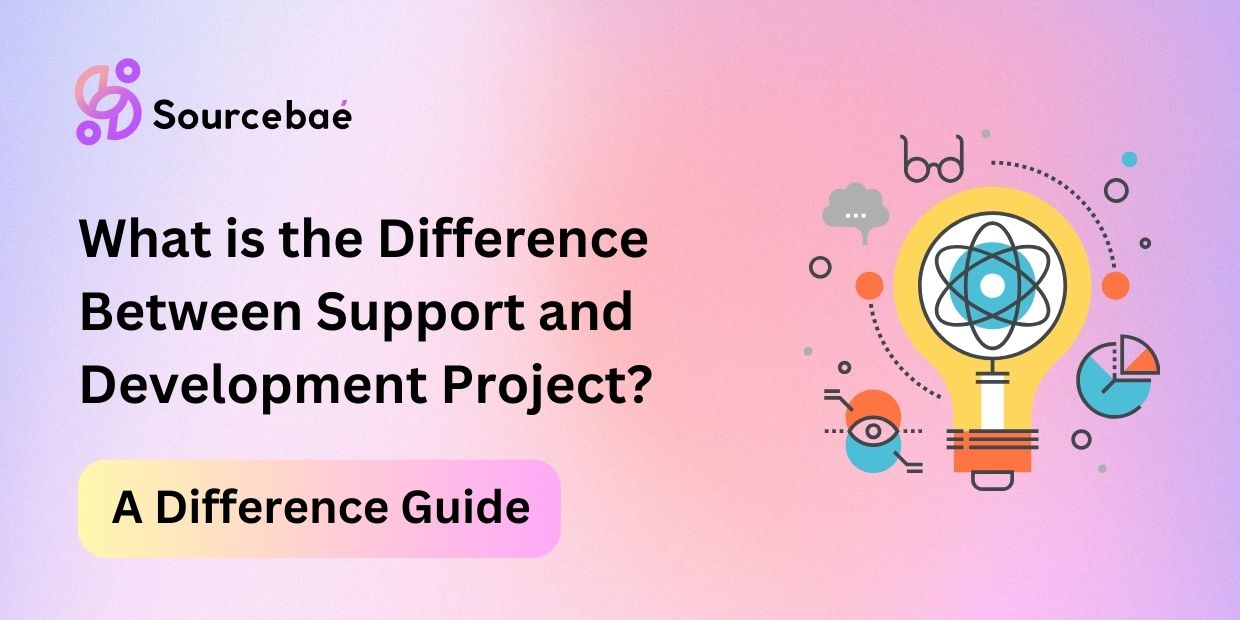In the dynamic realm of project management, two key terms frequently surface: support projects and development projects. Both serve distinct purposes and bring unique advantages to the table. Understanding the disparities between these project types is vital for making informed decisions in the professional world. In this article, we delve deep into the differences, benefits, and potential drawbacks of support and development projects. Whether you’re a seasoned project manager or just beginning your journey, this comprehensive guide will equip you with the knowledge needed to navigate these waters effectively.
To kickstart our exploration, let’s clarify the fundamental disparities between support and development projects.
Nature of Work
Support projects primarily involve maintaining existing systems or products. They aim to ensure smooth operations, fix issues, and provide assistance when needed. On the other hand, development projects revolve around creating something entirely new, whether it’s a software application, product, or infrastructure.
Goals and Objectives
Support projects focus on preserving stability and functionality, often with predefined service level agreements (SLAs) that dictate response times and issue resolutions. Development projects, however, strive to innovate, introducing novel features, products, or solutions to meet evolving market demands.
Scope and Flexibility
Support projects tend to have a fixed scope, as they are centered on maintaining existing assets. Development projects, conversely, often have a more flexible scope that can adapt to changing requirements and customer feedback.
Resource Allocation
Support projects usually require a dedicated support team available around the clock, while development projects may require a more fluid allocation of resources based on project phases and priorities.
Timeline
Support projects are ongoing and typically have no set endpoint, as long as the supported system or product remains in use. Development projects have defined timelines with clear milestones and completion dates.
Now that we’ve established the core distinctions between support and development projects, let’s explore the advantages each brings to the table.
Advantages of Support Projects
Support projects offer a range of benefits that can be invaluable for businesses and organizations.
1. Stability and Reliability
Support projects ensure that existing systems or products remain stable and reliable. This reliability is crucial for businesses that depend on these systems for their daily operations.
2. Cost-Effective
Compared to development projects, support projects are often more cost-effective. They utilize existing resources and infrastructure, reducing the need for significant investments.
3. Customer Satisfaction
Timely support and issue resolution lead to increased customer satisfaction. Happy customers are more likely to remain loyal and recommend your services or products to others.
4. Predictable Workload
Support projects offer a predictable workload, making it easier to allocate resources and plan staffing needs.
Advantages of Development Projects
Development projects also have their own set of advantages that cater to innovation and growth.
1. Innovation
Development projects drive innovation by creating new products, services, or solutions that can capture new markets or expand existing ones.
2. Competitive Edge
Innovative products and solutions can provide a competitive edge in the market, helping businesses stay ahead of the curve.
3. Revenue Generation
Successful development projects can generate substantial revenue, especially if they meet market demands and capture a significant customer base.
4. Learning and Growth
Development projects often involve learning new technologies and skills, fostering personal and professional growth among team members.
FAQs (Frequently Asked Questions)
Q: Can a project be both a support and development project simultaneously?
Yes, a project can encompass elements of both support and development. For instance, an existing software application may require support for bug fixes and maintenance while simultaneously undergoing development to introduce new features.
Q: Which type of project is more common in IT companies?
In IT companies, support projects are more common, especially for mature products that require ongoing maintenance. However, development projects are equally prevalent, particularly for startups and companies focused on innovation.
Q: Are there any disadvantages to support projects?
While support projects offer stability, they can become monotonous over time. Additionally, they may not provide the same level of excitement and growth opportunities as development projects.
Q: How can a project manager decide whether to pursue a support or development project?
The decision often depends on the company’s goals, market dynamics, and the current state of existing products or systems. A careful analysis of these factors is crucial in making the right choice.
Q: Is it possible to transition from a support role to a development role in a project management career?
Yes, many project managers start in support roles and later transition to development projects as they gain experience and expertise.
Q: What role does customer feedback play in development projects?
Customer feedback is invaluable in development projects as it helps refine and enhance the final product. It ensures that the result aligns with customer needs and expectations.
Conclusion
In the world of project management, both support and development projects have their place and advantages. Support projects excel in providing stability and reliability, while development projects foster innovation and growth. The choice between the two depends on the specific goals, resources, and market conditions of the organization.
Understanding the fundamental differences between support and development projects empowers project managers to make informed decisions that align with their organization’s strategic objectives. So, whether you’re steering towards support for stability or venturing into development for innovation, the key is to leverage these differences to your advantage.
READ MORE: HIRE REACT DEVELOPER






